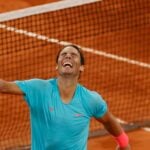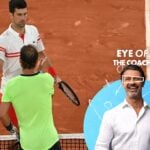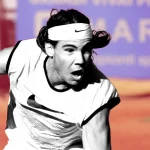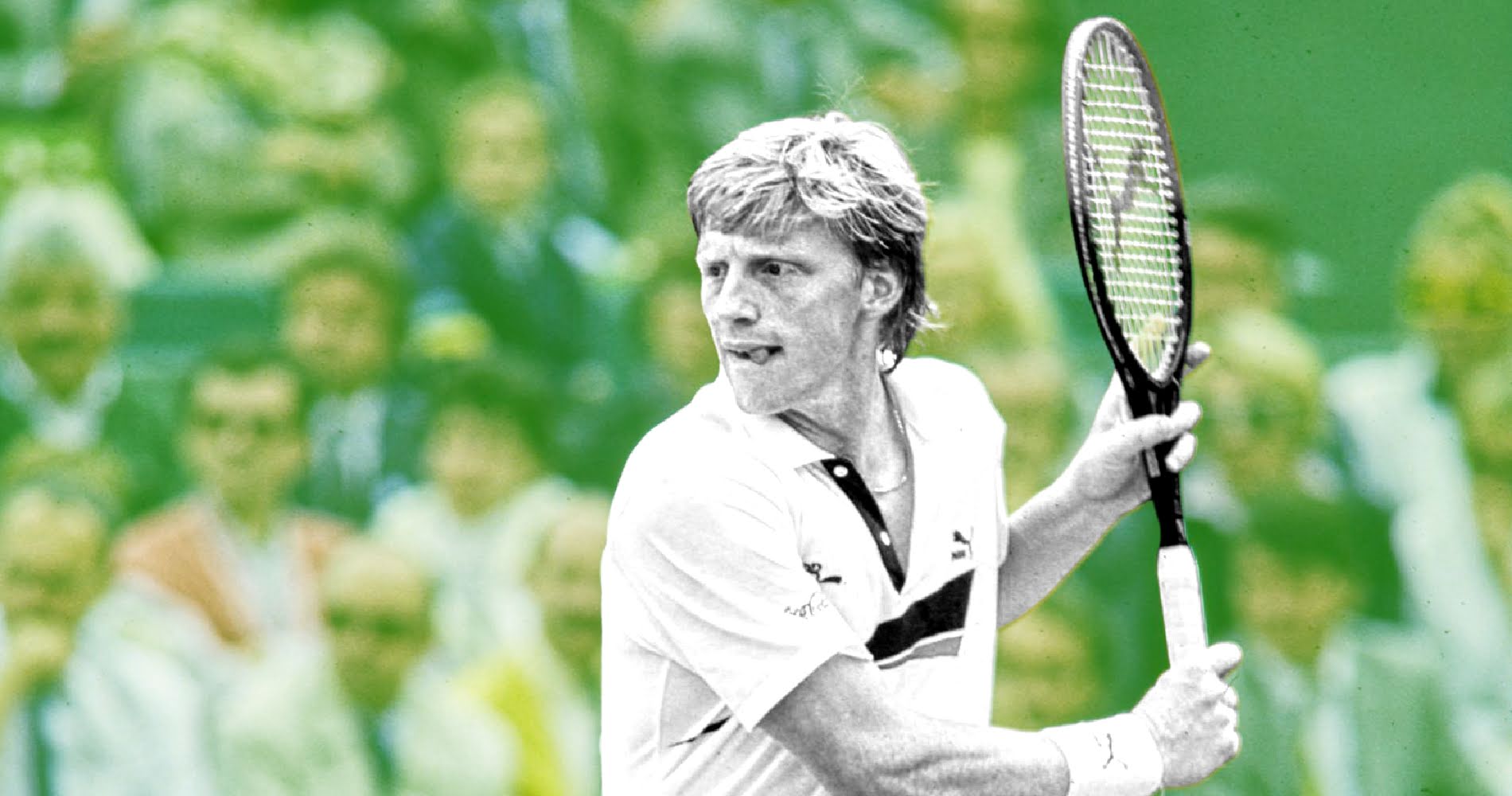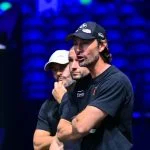April 17, 2005: The day Rafael Nadal officially started his Monte-Carlo reign
Every day, Tennis Majors looks back at the biggest moments in tennis history. On April 17, 2005, an 18-year-old Rafael Nadal battled past Guillermo Coria for his first of eight successive Monte-Carlo titles
 Rafael Nadal OTD 04_17
Rafael Nadal OTD 04_17
What happened exactly on that day
On this day, April 17, 2005, 18-year-old Rafael Nadal claimed his first ATP Masters 1000 event at the Monte-Carlo Masters. Ranked No 17 in the world, he beat defending champion Guillermo Coria, known as one of the best clay-court players in the world.
This win took him to the threshold of the top 10 (No 11) and made him a serious contender for the Roland-Garros title. It marked the start of the greatest dominance any player ever achieved on clay, with the Spaniard claiming an incredible 14 Roland-Garros crowns (to date, as of April 2023).
The players: Rafael Nadal and Guillermo Coria
- Teenage star Rafael Nadal
In April 2005, when the Monte-Carlo Masters began, the young Rafael Nadal was only 18 years old but had already made himself known on the ATP Tour as an upcoming threat. Back in 2002, Nadal, at the age of 15 years, 10 months and 26 days, made his first appearance on the main Tour, after the director of the Mallorca Open invited him into the main draw. In front of his home crowd, the 762nd-ranked player in the world not only played, but won his first ATP match, beating world No 81 Ramon Delgado in two sets (6-4, 6-4). A year later, in 2003, aged 16, at the Monte-Carlo Masters 1000, he defeated the Roland-Garros defending champion, Albert Costa (7-5, 6-3), before reaching the third round at Wimbledon (losing to Paradorn Srichaphan, 6-4, 6-4, 6-2).
In 2004, Nadal knocked out the new world No 1, Roger Federer, at the Miami Masters 1000 (6-4, 6-4), and was a part of Spain’s Davis Cup victory, defeating world No 2 Andy Roddick in the final against the United States (6-2, 6-7, 7-6, 6-2). In August, he also won his first ATP tournament, in Sopot, defeating Jose Acasuso in the final (6-3, 6-4). He started 2005 by reaching the Australian Open fourth round (defeated by Lleyton Hewitt, 7-5, 3-6, 1-6, 7-6, 6-2), before claiming two consecutive clay-court titles in South America (in Costa do Sauípe and Acapulco). Then, in Miami, he reached the final, where, to general astonishment, he managed to take a two-set lead against Roger Federer, before the world No 1 came back; Nadal finally lost (2-6, 6-7, 7-6, 6-3, 6-1). He was now the No 17 ranked player in the world.
- Clay-court maestro Guillermo Coria
In 2005, Guillermo Coria, aged 23 and ranked No 11 in the world, was considered to be one of the best clay-court players on the Tour. His early career was marked by a seven-month doping ban, in 2001, which even earned him the nickname “Nandrolino” in the Spanish-speaking press. Nevertheless, he came back, and had his breakthrough year in 2003. That year, he reached the final at the Monte-Carlo Masters (defeated by Juan Carlos Ferrero, 6-2, 6-2), but also claimed his first Masters 1000 title in Hamburg (defeating Agustin Calleri in the final (6-3, 6-4, 6-4) before reaching the semi-finals at Roland-Garros (lost to Martin Verkerk, 7-6, 6-4, 7-6). His career peaked in 2004, when he triumphed in Monte-Carlo (defeating Rainer Schuttler in the final, 6-2, 6-1, 6-3). At the time, he was even called “the King of Clay” by some pundits, and he reached the final at Roland-Garros, although he lost a dramatic final against Gaston Gaudio, blowing a two-set lead and two match points (0-6, 3-6, 6-4, 6-1, 8-6). Yet he was still a serious contender for the 2005 Roland-Garros crown. Nicknamed “El Mago” (“the Wizard”), Coria’s game relied on amazing footwork, great baseline strokes and outstanding touch.

The place: Monte-Carlo Country Club
Located at the top of the Rocher de Monaco, with a breathtaking view of the Mediterranean Sea, the Monte-Carlo Country Club has hosted one of the oldest international tennis tournaments since 1928. Usually considered the start of the clay-court season, it was a part of the ATP Masters 1000 category. Amongst its former champions, there was a long list of clay-court terrors, such as Bjorn Borg, Guillermo Vilas, Ivan Lendl, Mats Wilander, Sergi Bruguera and Gustavo Kuerten.
The facts: The status of clay-court king changes hands
At the 2005 Monte-Carlo Masters, the young Rafael Nadal was the main attraction. The 18-year-old southpaw had already made himself famous with a few major upsets in the previous years, and was growing stronger and stronger. He was no longer a newcomer on the ATP Tour. In 2005, he had already claimed two ATP titles, and at the Miami Masters 1000, he had come very close to defeating the world No 1, Roger Federer, in the final.
He was now world No 17, and those who had witnessed how he had tortured the Swiss on hard courts with his amazing topspin couldn’t wait to see him taking on the clay-court season.
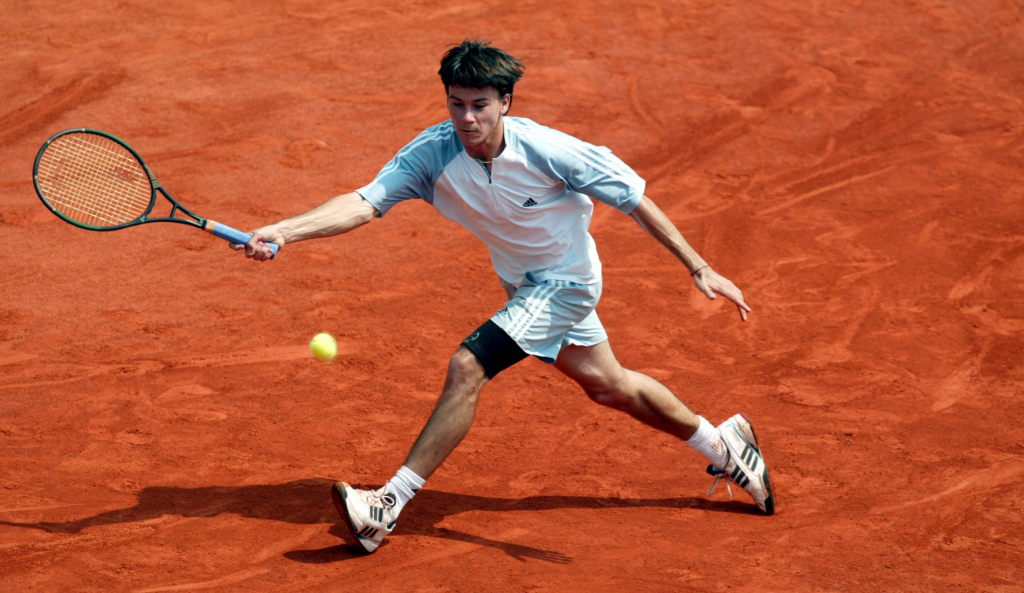
Nadal produced an impressive level of tennis the whole week. But he had to battle hard to pass through a firing Richard Gasquet in a very intense semi-final clash (6-7, 6-4, 6-3), and his opponent in the final, Coria, had been one of the best clay-court players of the last three years. When Nadal walked onto the Centre Court in his orange sleeveless top, it was hard to tell who was the favourite: the young Spaniard or the experienced Argentine?
At the start, the Argentine seemed to take the lead. Using his trademark drop shots, he scored an early break and took a 3-1 lead. But he used a lot of energy to control Nadal’s powerful spin and soon began to miss more than usual. The tennis world discovered how much damage the youngster could make with his left-handed forehand and his incredible stamina. He moved around his backhand as much as he could to harass Coria on his own backhand, and it seemed almost impossible to get past his defense. It was not very long before Nadal led 6-3, 6-1.
The Spaniard seemed to suffer from a loss of energy in the third set, which he lost 6-0 with many unforced errors.
In a prequel of the tremendous fight the same two players would deliver a few weeks later in Rome, the fourth set was all about long rallies, broken by Coria’s drop shots. But Nadal was everywhere, bursting with energy and screaming his soon-to-be famous “Vamooos” after every long point he won. He was up 4-1 with two double break points, but Coria had no intention of giving up and started to play more aggressively, while Nadal might have been a little more tense. Fighting for every point, the Argentinian managed to hold his serve and then get back to 4-4.
It would take more than that to break Nadal’s spirit. He began to hit the ball even harder and gave no easy points to his opponent. At last, a final forehand winner sealed his victory: Nadal was the new Monte-Carlo Champion. What no one knew at that moment was that he was going to remain the champion here until 2013, claiming the title eight times in a row in a 46-match winning streak.
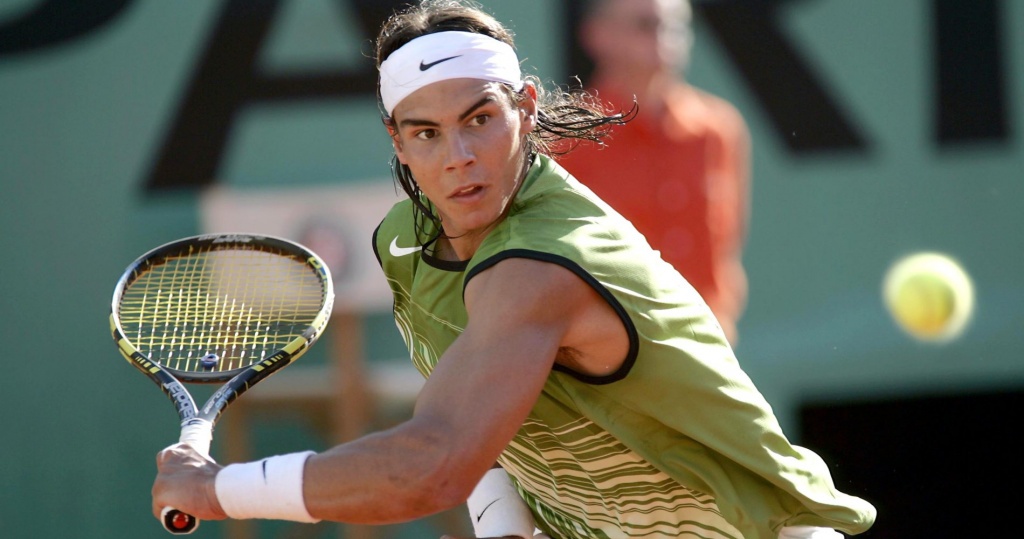
What next: Nadal dominates on clay; Coria fades away
The following week, Nadal would remain undefeated in Barcelona, beating Juan Carlos Ferrero in the final (6-1, 7-6, 6-3), and he entered the top 10 for the first time in his career. In Rome, bursting with confidence, he would edge Guillermo Coria in the longest ATP final ever played (6-4, 3-6, 6-3, 4-6, 7-6). These unbelievable results would make him the favourite to win his first Slam title at Roland-Garros. This added pressure would not disturb Rafael Nadal, who would win the tournament at his first attempt, beating Roger Federer (6-3, 4-6, 6-4, 6-3) in the semi-final and Mariano Puerta in the final (6-7, 6-3, 6-1, 7-5). It would prove to be the beginning of a remarkable run. Nadal would not be defeated on his favourite surface before May 20, 2007, when Federer would finally beat him on clay (2-6, 6-2, 6-0).
Guillermo Coria, the second favourite after Nadal at Roland-Garros, would fall in the round of 16 against Nikolay Davydenko (2-6, 6-3, 7-6, 6-2). He would never win a match at the French Open again. Later in 2005, he would reach the same round of 16 at Wimbledon (losing to Andy Roddick, 6-3, 7-6, 6-4) and the quarter-finals at the US Open (defeated by Robby Ginepri, 4-6, 6-1, 7-5, 3-6, 7-5). In September, he would cross paths a third time with Rafael Nadal in the final of Beijing and the Spaniard would prevail again (5-7, 6-1, 6-2). From this time, after a shoulder injury, Coria would face issues with his serve, serving as many as 20 double faults at times in one match. These issues would prevent him from performing at the highest level and would ruin his career. After 2005, he would only participate in three more Grand Slam tournaments, the Australian Open and the US Open in 2006, and Roland-Garros in 2008, his best result being a third round in Melbourne. He would announce his retirement from professional tennis in 2009.
